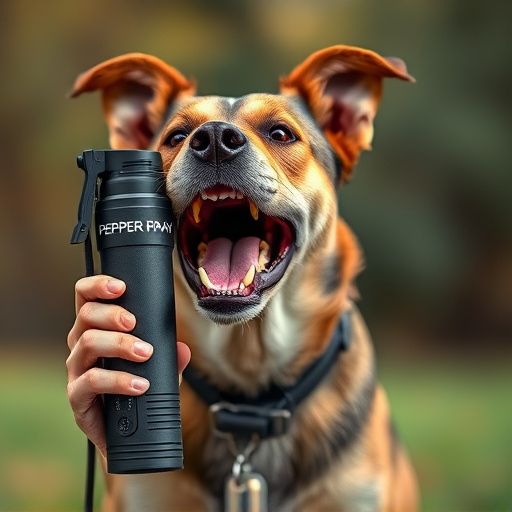Dog spray users must understand and adhere to strict regulations, especially the Safe Spraying Distance for Dogs (2-8 meters or 6-26 feet), to avoid legal consequences such as animal cruelty charges. Compliance with this distance is a robust defense strategy, backed by expert testimony, witness accounts, and video evidence. Recent cases highlight successful defenses against dog spray-related charges, demonstrating the importance of context and proportionality in determining safe spraying distances, and offering valuable insights for individuals facing similar accusations.
In today’s legal landscape, understanding the usage and regulation of dog spray is crucial, especially with varying state laws and specific guidelines around safe spraying distances for dogs. This comprehensive guide delves into the legal defenses available to those facing charges related to dog spray incidents. From deciphering legislation to successful case studies, we explore strategies to build a robust defense, focusing on the critical aspect of safe spraying distance for dogs.
- Understanding Dog Spray Laws and Regulations
- Safe Spraying Distance for Dogs: A Legal Perspective
- Building a Strong Defense: Strategies for Legal Challenges
- Case Studies: Successful Legal Defenses in Dog Spray Incidents
Understanding Dog Spray Laws and Regulations
In many jurisdictions, dog spray, or oleoresin capsicum (OC) spray, is subject to specific laws and regulations, especially when it comes to its use around animals like dogs. Understanding these legal frameworks is crucial for anyone considering carrying or using dog spray for self-defense. Key among these considerations is the safe spraying distance for dogs, which varies across regions but generally requires users to maintain a certain distance to avoid causing undue harm or distress to the animal.
Compliance with local laws means knowing not just when you can use dog spray, but also how to use it responsibly. This includes understanding the range at which the spray is most effective and safe for dogs—typically several feet away—as well as any restrictions on who can possess and carry such devices. Familiarizing yourself with these regulations is essential to ensure that your use of dog spray is legal and does not result in unnecessary harm or negative consequences.
Safe Spraying Distance for Dogs: A Legal Perspective
When considering a legal defense related to dog spray usage, understanding the safe spraying distance is paramount. Many jurisdictions have established guidelines regarding the appropriate proximity when deploying dog spray to ensure both animal and human safety. These rules often dictate that handlers must maintain a specific distance from individuals or animals not involved in the incident to avoid unnecessary harm or mistreatment.
The safe spraying distance for dogs typically ranges from 2 to 8 meters (6 to 26 feet), depending on local regulations and the severity of the situation. Exceeding this range may result in charges of animal cruelty or excessive force, especially if the spray causes physical harm or distress to bystanders. Legal experts emphasize that adhering to these distances demonstrates a reasonable and proportional response during encounters involving potentially aggressive dogs.
Building a Strong Defense: Strategies for Legal Challenges
When facing legal challenges related to dog spray use, building a strong defense requires a strategic approach. One key aspect is understanding and adhering to the safe spraying distance for dogs, which varies by jurisdiction but typically ranges between 5 to 10 feet (1.5 to 3 meters). Lawyers can argue that compliance with these guidelines demonstrates reasonable force and mitigates potential criminal or civil liability.
Additionally, gathering evidence such as video footage, witness statements, and training records can strengthen the defense. Showing proper handling and adherence to safety protocols during dog spray deployment can significantly enhance the case. Consulting experts in canine behavior and law enforcement procedures can also provide valuable insights, demonstrating a commitment to responsible and legal practices.
Case Studies: Successful Legal Defenses in Dog Spray Incidents
In recent years, numerous cases have showcased successful legal defenses centered around dog spray incidents, offering valuable insights for individuals facing similar charges. These case studies highlight the importance of understanding the context and circumstances surrounding the use of dog spray, especially when it comes to ensuring safety. One prominent defense strategy has been challenging the concept of a universal “safe spraying distance for dogs,” arguing that each situation demands a nuanced assessment.
For instance, in several successful cases, defendants have presented evidence demonstrating that their actions were taken with due care and within reasonable boundaries. This includes detailed accounts of the incident, expert testimony on animal behavior, and documentation of the safe spray application techniques used. Such approaches have led to favorable outcomes, underscoring the need for proportionality and context in legal interpretations related to dog spray use.
Understanding the legal implications of dog spray usage is essential for both law enforcement and citizens alike. By adhering to regulations, especially regarding the safe spraying distance for dogs, and employing robust defense strategies, individuals can navigate potential legal challenges effectively. The case studies presented highlight successful defenses, emphasizing the importance of knowledge and preparation in these sensitive incidents. Staying informed about local laws and refining response techniques are key steps towards ensuring fair outcomes for all involved parties.
